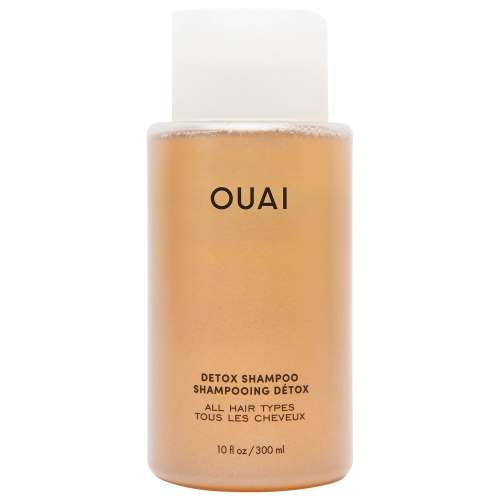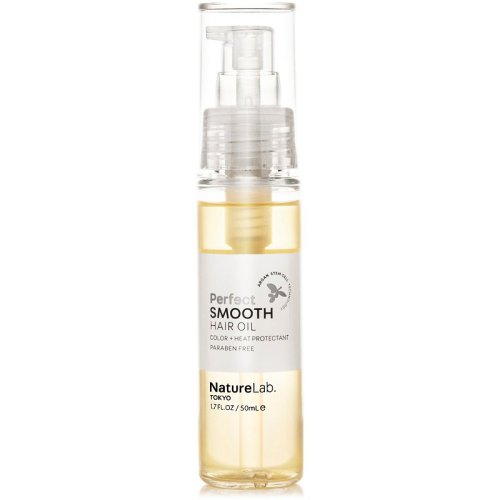Our editors independently select these products. Making a purchase through our links may earn Well+Good a commission
Hair Slugging Is Going Viral on TikTok, but Is It Legit? Here’s What Stylists Have To Say
Hair slugging is going viral on TikTok, but is it legit? Here, hairstylists weigh in on whether or not the practice is effective.

Last year, TikTokers deemed slugging the must-know skin-care trend for an extra soft and hydrated complexion. But in 2022, a new iteration of the practice has emerged on the platform—this time, for your hair.
“Hair slugging” has gone viral, and racked up over 4.7 million views. The process involves coating your hair in oil before bed, then wrapping it up in a tube sock and letting it sit overnight. Allegedly, it will moisturize and protect your strands while you sleep (just like regular slugging does for your skin), and you’ll wake up with shinier, healthier hair.
But as with any emerging TikTok trend, we’re skeptical about whether or not it’s as legit as people claim. So we’ve tapped Marty Harper, celebrity hairstylist and brand ambassador for NatureLab. Tokyo, and Shvonne Perkins, lead educator at Madison Reed, to break down whether hair slugging truly deserves a spot in our routines.
What is hair slugging?
The whole point of slugging is to hydrate your hair. Considering dry hair is more prone to frizz, breakage, and dullness, saturating your strands with moisture is essential for keeping them healthy—and the pros confirm that this is an effective way to do it.
According to Harper, hair slugging helps with “intense conditioning and creating bend and texture for the hair.” While deep conditioners and leave-in masks can deliver similar results, the slugging method of using a hair oil and wrapping your strands in a sock overnight takes things to the next level.
“Encasing the hair protects the conditioning treatment and allows it to stay in contact with your hair all night,” Perkins explains. It also gives your hair “a little bit of natural warmth,” which she says can “help soften the hair strands and allow the product to penetrate better.”
What’s more, the combination of the moisture from the hair oil and the texture from the sock will also add a little oomph to your natural texture. “After slugging your hair overnight, you will see more waves and bounce,” says Harper, adding that this can potentially shave time off of your a.m. styling routine.
Who should try slugging?
While slugging can be beneficial to everyone, “medium to thick textures are more ideal,” says Harper. If you’re someone with thin hair, he explains that it may be “more difficult as you are compressing thin hair for an extended period of time.”
If you have thin hair and want to give this trend a go, Perkins recommends “keeping the treatment off the roots to avoid killing the volume or getting oily.”
How to slug your hair the right way
Since stylists have given hair slugging their stamp of approval, it seems worth a try. To do it properly, follow their step-by-step instructions below.
1. Start with a clean scalp
Wash your hair with a gentle clarifying shampoo. Perkins recommends using an apple cider vinegar-infused formula to remove any build-up around the hair follicles. This will ensure that the oil you’re about to apply has a clean canvas, which will allow it to get deep into the hair and repair breakage.

Ouai Detox Shampoo — $30.00
2. Dry your hair
Whether you want to air dry or blow dry, be sure your strands are at least 85 percent dry before starting the slugging process.
3. Massage in an oil
Once your hair is dry, Harper recommends massaging a hair oil that “won’t weigh your hair down or make it greasy” into your strands (argan oil, for example, is a great option; coconut oil, not so much). “The physical friction of massaging the oil into the hair really helps push the product into the hair,” adds Perkins.

Online Only NatureLab. Tokyo Perfect Smooth Hair Oil — $17.00
4. Wrap your hair in a sock
Pull your hair into a ponytail, and put it inside a tube sock. Then, tie it up with two elastics to hold it in place.
5. Get your beauty rest
While you’re sleeping, the slugging treatment will get to work.
6. Rinse
Perkins recommends washing your hair with tepid water to get most of the product out. “Once you feel the ‘slip’ from the product is mostly out, change to cold water, which helps seal the hair’s cuticle,” she says. This cold-water treatment method keeps the good stuff inside and leaves hair feeling shiny and healthy.
Want even more beauty intel from our editors? Follow our Fineprint Instagram account) for must-know tips and tricks.
Sign up for the Well+Good SHOP Newsletter
Get exclusive deals on wellness, beauty, fitness, and food products that have been hand-picked by our editors.
Got it, you've been added to our email list.










